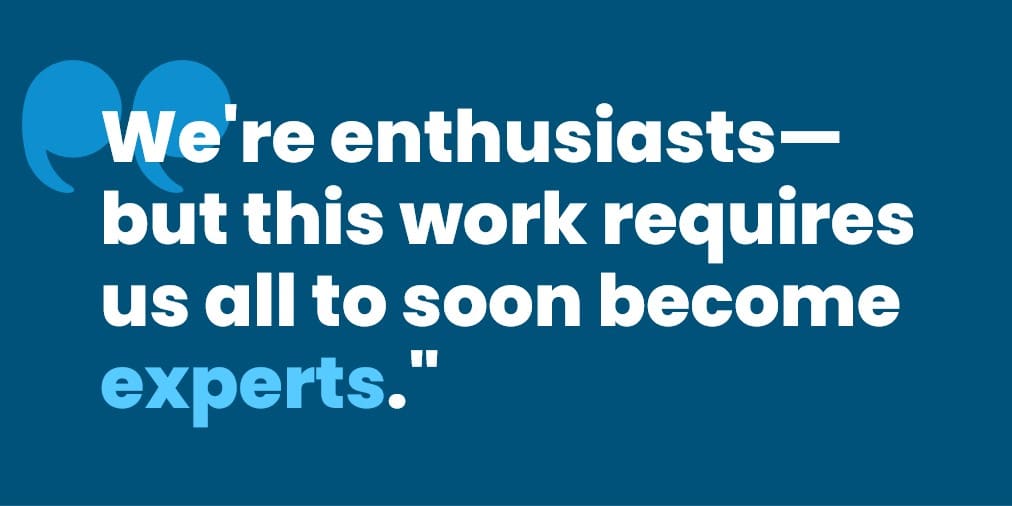
AI tools for financial PR, digital marketing: 5 takeaways from Office Hours
Key takeaways:
- Financial PR and marketing pros shared how they are using AI tools in their work.
- These powerful tools can synthesize data quickly and save time.
- Even reluctant adopters may find the tools can help with mundane tasks.
Yesterday we hosted another of our Office Hours series. The concept is to invite our community of PR and digital marketing pros to “drop in” to discuss a current topic on everyone’s minds. This week’s topic: AI.
We approach Office Hours as an idea exchange. We aren’t experts on AI—but know we all soon may need to be. So, we tackled the topic as enthusiasts sharing a few use cases. And our discussion once again did not disappoint.
Lowe Group Director of Client Services and Business Development Sarah Bowes and I kicked off the hour with our discussion of how we use AI tools for better journalist matching, list building and pitch crafting. We also shared a few ways AI can be used to evaluate media coverage and develop strategy. (See last week’s AI is changing financial PR for the better for more on these topics.)
Then we went even deeper with a discussion on using generative AI for media planning led by LG Digital’s Pat Allen and our guest panelist, David Partain, long-time campaign strategist most recently with Northern Trust Investments and specifically FlexShares. Media planning is high stakes for the digital marketer, and it involves a lot of data.
Pat and David used Claude Sonnet 3.7 to illustrate what can be done when you upload paid research data, prime the model, and ask questions, driving deeper and deeper. They demonstrated how it could serve up a specific mix of detailed media recommendations for a specific goal to reach a specific audience.
We were happy to have a professional media planner, Jill Arthur, SVP, Managing Director of GRP Media, join in the Q&A, and add to the media planning conversation. “Large Learning Models (LLMs) can be helpful at the start and to check planning work,” Jill said.
“It’s now possible to use AI to target specific people in an airport based on flight data, time of day and other factors.”
She went on to offer the use case of an out-of-home media buy as an example of what more can be done using AI beyond generative search. It is now both possible and practical to use AI to target specific people in an airport based on flight data, time of day and other factors. While Jill might not have recommended out of home advertising for investment advertising previously because it was too broad, she said a professional planner can now target 10 traveling executives to get in front of in this “unexpected, unique way.”
Getting to know the tools
Here are five takeaways from our hour-long discussion:
-
- The AI tools for PR have already revolutionized the process of finding the right journalists by topic and recent coverage. Tools like Muck Rack automatically recommend similar journalists once you create a media list. This doesn’t replace the power of relationships in media pitching, but it does streamline planning, research and reporting.
- Staying on the subject of PR, zero-click search results amplify the need for proactive media relations. This shift makes earned media and placed content more critical than ever for brand visibility and to stay relevant online. In fact, there may be a price in terms of lower awareness for firms that avoid PR. In a zero-click world, it hurts to be media shy!
- Our guest David Partain emphasized the power of increasingly probing questions. In fact, in your back and forth with the models, he suggests you make a point of asking, “What other questions should I be asking?”
He added, “Don’t be afraid to insist on more specifics.” In the demo, David explained that Claude included podcast recommendations in the media plan he and Pat created. Not satisfied, they asked for more specifics, which resulted in titles that were more on-target—and included recommended KPIs. By iteratively refining prompts, marketers can move from broad scenarios to highly specific, actionable media plans in a fraction of the time previously required. - Pick the AI tool that is right for the task. While Pat loves Claude Sonnet for tasks involving marketing data analysis, both Sarah and a number of our guests are fond of ChatGPT. One participant shared their early experience with Jasper.ai, a tool for marketers that can be trained on a company’s brand voice, and enables the creation of multiple brand versions of email or social posts for different audiences (institutional, retail, etc.). Regardless of the tool used, Sarah noted the importance of privacy settings when working with proprietary or non-public data or news.
- Our panel repeatedly stressed how AI is a starting point that can help humans get further. Communicators, with their deep understanding of language and brand nuance, are uniquely positioned to extract the best results from AI.
Even so and likely due to lack of unfamiliarity, not everyone is on board with using AI, especially in our regulated industry. Help reluctant team members boost adoption by demonstrating time savings on routine tasks (e.g., drafting press releases or award nominations), and emphasizing that AI is a tool to enhance—not replace—the human factor. Clear internal policies and anonymization of sensitive data are also essential for safe and compliant use.
We’re already making plans for our next Office Hours. Send us a note if you’d like to take part.
Subscribe.
Receive the latest news and insights from Lowe Group.